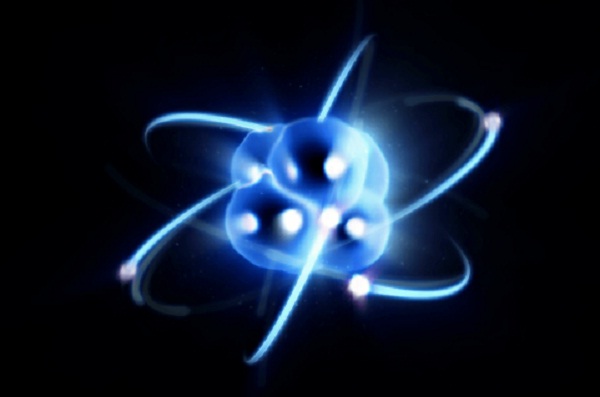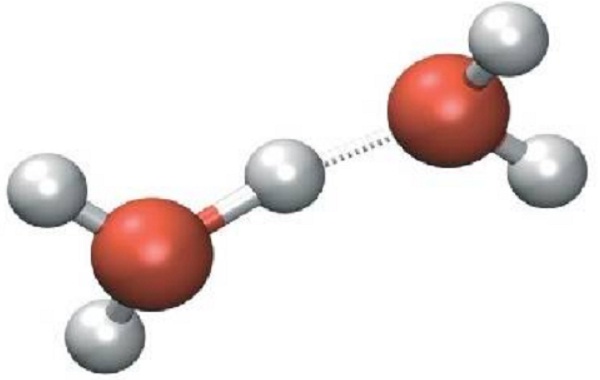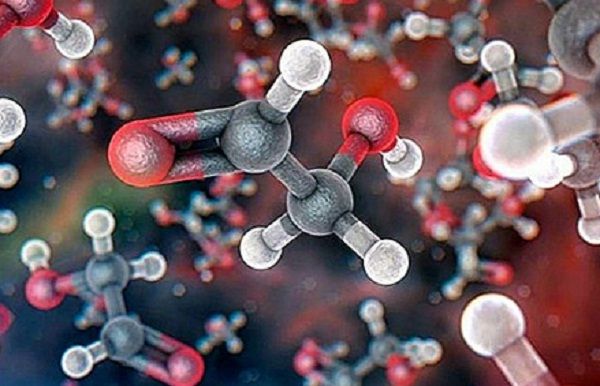What are ions? it is to know the interior of an atom, molecule or particle. Many things have been the task of the human being since he began to explore the environment for the purpose of survival. His curiosity has gone beyond the perceptible to penetrate into the interior of particles as small as atoms. Today, many secrets of this very small particle that integrates matter are being used.
Introduction:
Ions are ubiquitous in nature and play a critical role in various physical, chemical, and biological processes. But what exactly are ions? In simple terms, ions are atoms or molecules that have an unequal number of protons and electrons, resulting in a positive or negative charge. These charged particles are present in all matter and are responsible for many fascinating phenomena such as the color of fireworks, the electrical conductivity of metals, and the functioning of our nervous system.
In this article, we will delve into the world of ions, exploring their definition, properties, and functions. We will also examine their importance in different scientific disciplines such as chemistry, biology, and physics.
What are ions?
They are an electrically charged atom. Atoms can lose or gain electrons in their last shell. The word comes from the Greek ion which means "Going”. They are atoms that have gained or lost electrons, presenting electric charge. The electrons being transferred belong to the outer shell of the particle. The total number that can be passed through is three electrons. Because there would be attraction to the nucleus or repulsion on the excess electrons. It can happen that the formation of an ion occurs from a neutral molecule or atom.
Who accept and also yield loss of electrons. It happens that in the formation of an ion, if it is added one or more electrons to a neutral atom. A negatively charged ion is produced called a cation (attracted to the cathode), it gives up electrons. By losing or donating electrons, an ion is produced with negatively charged called Anion (attracted to the anode), it has more electrons than protons. Is an atom or molecule that ceased to be neutral to pass to be charged. By an excess of its cargo or by default of its cargo. In the in 1830, Michael Faraday proposed the existence of ions. But 1903, Arrhenius developed the theory of ions.


Ions have unique properties that differentiate them from neutral atoms or molecules. Some of the essential properties of ions include:
- Ions can carry an electric charge, which makes them highly reactive.
- Ions can interact with other charged particles, such as electrons or other ions, through attractive or repulsive forces.
- Ions can form chemical compounds with other ions or neutral molecules through ionic bonding.
- Ions can be created through various processes such as chemical reactions, radiation, or electrolysis.
Properties of ions:
Ions have unique properties that differentiate them from neutral atoms or molecules. Some of the essential properties of ions include:
- Ions can carry an electric charge, which makes them highly reactive.
- Ions can interact with other charged particles, such as electrons or other ions, through attractive or repulsive forces.
- Ions can form chemical compounds with other ions or neutral molecules through ionic bonding.
- Ions can be created through various processes such as chemical reactions, radiation, or electrolysis.
Functions of ions:
Ions play a vital role in various physical, chemical, and biological processes. Some of their key functions include:
- Regulating the electrical signals in the nervous system: Sodium, potassium, and calcium ions are essential for generating and transmitting electrical signals in the nervous system.
- Maintaining the pH balance in the body: Hydrogen ions help regulate the pH balance in the body, which is critical for various physiological processes.
- Conducting electricity: Ions such as sodium, potassium, and chloride are responsible for the electrical conductivity of solutions, which is important for many applications, including batteries and electronics.
- Catalyzing chemical reactions: Many enzymes require metal ions, such as zinc or iron, to catalyze chemical reactions in living organisms.
Ions in Chemistry:
Ions play a central role in chemistry, where they are involved in various chemical reactions and are essential for forming chemical compounds. Some of the important concepts related to ions in chemistry include:
- Ionic compounds: These are compounds formed by the combination of cations and anions through ionic bonding. Examples of ionic compounds include table salt (sodium chloride) and calcium carbonate.
- Acid-base reactions: These are chemical reactions that involve the transfer of hydrogen ions (protons) from one molecule to another. Acid-base reactions are critical for maintaining the pH balance in the body and are also important in industrial processes such as production of fertilizers and pharmaceuticals.
- Redox reactions: These are chemical reactions that involve the transfer of electrons from one molecule to another. Redox reactions are critical for many processes such as energy production in cells and corrosion of metals.
Ions in Biology:
Ions play a critical role in biology, where they are involved in various processes such as nerve impulses, muscle contraction, and metabolism. Some of the important concepts related to ions in biology include:
- Ion channels: These are protein molecules that allow ions to pass through the cell membrane and are critical for generating and transmitting nerve impulses.
- Action potential: This is a brief electrical signal generated by the movement of ions across the cell membrane, which is important for muscle contraction and sensory perception.
- Enzyme catalysis: Many enzymes require metal ions, such as zinc or iron, to catalyze chemical reactions in living organisms.
- Mineral ions: Essential minerals such as calcium, iron, and zinc are ions that play important roles in various physiological processes, including bone formation, oxygen transport, and immune function.
Ions in Physics:
Ions play an important role in physics, where they are involved in various phenomena such as electricity, magnetism, and radiation. Some of the important concepts related to ions in physics include:
- Electric fields: Ions can interact with electric fields, resulting in various effects such as electrostatic attraction or repulsion.
- Plasma: This is a state of matter that consists of ionized particles and is important in various fields such as astrophysics and fusion energy.
- Radiation: Ions can be created through ionizing radiation, which can have harmful effects on living organisms.
- Ion engines: These are propulsion systems that use ions to generate thrust, which is important in space exploration.
Types of Ions
There are two types one of positively charged, which have a deficiency of electrons in their shell more external, it is known as a positive formal charge. Some are usually small others don't. Example [NH4+].The negatively charged ones, which need or attract electrons, each of it is attracted by the core strongly. The closer to the nucleus the more attracted be. What happens in that the attracted ion is polarized because it is very away from the core that holds it weakly, it is easy to donate it or boot.
A dianion, a species with two negative charges, a zwitterion, with a charge equal to zero, on the same species, one positive and another negative is neutral. Ionic compounds produce, radicals with electrons odd.


What is a cation?
The word means "the one who goes down". They are species mono atomic or poly atomic that are charged by the action of yielding, giving electrons, their charge is positive. What happens is that it transfers an electron from its outermost layer, it releases and expands. They are known as cations which they have a positive charge. Metals are responsible for their origin. It they represent with the symbol of the atom and the sign "+". It is important those who they are often formed from metals.
The number of electrons gained or lost is also indicated.
What is an anion?
The word means "he who goes up”" They have cargo negative because they accept or need electrons. To complete its last layer and look like a noble gas with eight electrons in its outer shell. It happens that when you accept a complete electron its outer layer shrinks and becomes small. Anions are attracted to the anode. They are ions negative. Non-metals are responsible for their origin. Your representation it bears the symbol of the corresponding atom and the sign "–".
Examples of Ions
Cations:
- Aluminum +3
- Barium +2
- Beryllium +2
- Cesium +
- Calcium +2
- Chromium +2 (chromous)
- Chromium +3 (chrome)
- Chromium +6 (perchromic)
- Cobalt +2 (cobaltous)
- Cobalt +3 (cobalt)
- Copper +1 (cuprous)
- Copper +3 (cupric)
- Gallium +3
- Helium +2 (alpha)
- Hydrogen +1 (proton)
- Iron +2 (ferrous)
- Iron +3 (ferric)
- Lead +2 (plumbose)
- Lead +4 (lead)
- Lithium +1
- Magnesium +2
- Manganese +2 (hypomanganous)
- Manganese +3 (manganous)
- Manganese +4 (permanganic)
- Mercury +2 (mercuric)
- Nickel +2 (nickelous)
- Nickel +3 (nickel-free)
- Potassium +1
- Silver +1
- Sodium +1
- Strontium +2
Polyatomic Cations:
- Ammonium (NH4+)
- Mercury (Hg+2)
- Hydronium (H3O+)
- Nitronium (NO2+)
Anions:
- Arsenide (As3-)
- Nitride (N3-)
- Bromide (Br-)
- Carbide (C4-)
- Chloride (Cl-)
- Phosphide (P3-)
- Hydride (H-)
- Oxide (O2-)
- Sulfide (S2-)
- Iodide (I-)
Oxyanions:
- Hypochlorite (CLO-1)
- Chlorite (CLO2-1)
- Chlorate (CLO3-1)
- Perchlorate (CLO4-1)
- Hypobromite (BrO-1)
- Bromate (BrO3-1)
- Iodate (IO3-1)
- Sulfite (SO3-2)
- Sulfate (SO4-2)
- Nitrite (NO2-1)
- Nitrate (NO3-1)
- Carbonate (CO3-2)
- Hydrogen Carbonate (HCO3-)
- Dichromate (Cr2O7)
- Chromate (CrO4-2)
Organic Anions:
- Acetate (C2H3O2-)
- Formate (HCO2-)
- Oxalate (C2O4-2)
- Thiocyanate (SCN-)
- Amine (NH2-)
- Bisulfide (HS-)
- Cyanate (OCN-)
- Hydroxide (OH-)
Cations in biological processes, the diffusion of the concentration of Na+ cations. K+, is realized by means of the membrane of the cells. To maintain them electrochemical potentials and transport the molecule inside. They drive muscle contraction. The transmission of the nerve impulses. Cations are part of enzymes with functional catalytic. In medicine, cation complexes are employed as a contrast in magnetic resonance imaging for soft tissues. In diseases such as cancer are it uses cisplatin, which prevents the growth of tumor cells.
Importance of Ions
That most of metals quite often form cations. Ions are fundamental for life as they are: Ca+, Na+, K+ indispensable in living organisms and in cell biology. There are applications of the use of ions and as time goes by there are more applications that are discovered. From the study of air purification to the manufacture of engines dependent on ionic materials. Dissociated organic ions represent the solids present in water. The common salt, dissociates into CL-Na+. The ammonium NH3+.
In the article What are ions? You were able to get the definition of ions, cation, anion examples and more. I hope you can use it to solve your activities.
FAQs:
Q: Are all ions charged particles?
A: Yes, all ions are charged particles, either positively or negatively charged.
Q: Can ions form chemical compounds?
A: Yes, ions can form chemical compounds through ionic bonding with other ions or neutral molecules.
Q: What is the role of ions in the nervous system?
A: Sodium, potassium, and calcium ions are essential for generating and transmitting electrical signals in the nervous system.
Conclusion:
Ions are charged particles that play a critical role in various physical, chemical, and biological processes. They have unique properties that make them highly reactive and capable of interacting with other charged particles through attractive or repulsive forces. Ions are essential for forming chemical compounds, conducting electricity, regulating the pH balance in the body, and catalyzing chemical reactions. They are also important in various scientific disciplines such as chemistry, biology, and physics. Understanding the basics of ions is essential for grasping the fundamentals of many scientific phenomena and applications.

